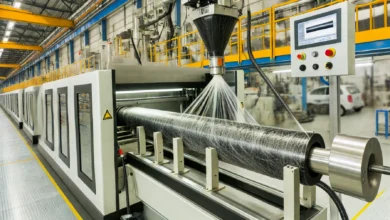Boost Your Wastewater Management with MBBR Bio Media

Introduction: The Growing Need for Efficient Wastewater Management
As global water resources face increasing stress, wastewater management has become an essential aspect of environmental sustainability. Clean water is vital not just for human health but also for the ecosystem, agriculture, and industry. Unfortunately, many traditional wastewater treatment methods are inefficient, costly, and can leave a significant environmental footprint. Therefore, innovative solutions are becoming necessary to meet the demands of modern wastewater treatment processes.
MBBR Bio Media is one of those cutting-edge innovations revolutionizing the field. This technology is at the heart of a system that significantly improves the efficiency of wastewater treatment while being energy-efficient, sustainable, and adaptable to varying conditions. In this blog, we’ll explore why MBBR Bio Media has become a game-changer for both municipal and industrial wastewater treatment, and how it can help you optimize your operations.
What is MBBR Technology?
Moving Bed Biofilm Reactor (MBBR) technology is a biological wastewater treatment process. It was developed to enhance the efficiency of biological treatments without needing a large amount of space. In contrast to conventional methods, which require expansive tanks and intensive energy, MBBR uses floating bio media to provide a surface for microorganisms to grow and process waste more efficiently.
The technology combines the benefits of activated sludge and biofilm systems, allowing a large population of microorganisms to thrive within a compact treatment area. As a result, MBBR is a preferred option for many facilities, particularly those looking for an environmentally sustainable and space-efficient solution.
Understanding MBBR Bio Media: The Heart of the System
MBBR Bio Media serves as the foundation of the MBBR system. These are small, lightweight plastic carriers that float freely within the reactor tank. Each piece of bio media has a large surface area designed to support the growth of biofilms—microorganisms that break down pollutants from the wastewater. As the water flows through the tank, the bio media continuously move and interact with the wastewater, providing a highly effective treatment environment.
The Structure and Design of MBBR Bio Media
Bio media come in different shapes and designs, each optimized for specific wastewater characteristics and treatment goals. The most common types include small cylindrical or hexagonal pieces, which are perforated to maximize the surface area. This surface area is critical as it allows the biofilm to attach and grow, ensuring there’s enough microbial activity to process the incoming organic load efficiently.
The open structure also promotes optimal water flow, preventing clogging and allowing the system to handle high variations in organic loading, making it versatile across a wide range of industries.
How MBBR Bio Media Works in Wastewater Treatment
The MBBR system operates by utilizing the floating bio media, where microorganisms settle and thrive on the surface. These bacteria and other microbes form biofilms, which actively digest and remove organic pollutants from the water. As the bio media move freely throughout the reactor, they continuously make contact with the wastewater, ensuring thorough treatment and exposure to pollutants.
One of the key advantages of this system is its ability to handle fluctuating wastewater loads without sacrificing efficiency. Even under challenging conditions, such as varying levels of organic waste, MBBR Bio Media adapts seamlessly.
To buy MBBR Bio Media, visit https://www.mbbr-media.com/
The Biological Filtration Process
The core of the MBBR process lies in biological filtration. As microorganisms grow on the bio media’s surface, they form biofilms, which absorb and metabolize organic compounds and nutrients from the wastewater. Over time, the biofilm matures and continues to break down pollutants, turning harmful contaminants into more manageable forms such as carbon dioxide and water.
This process, known as biological nitrification and denitrification, is critical for reducing ammonia, nitrogen, and other harmful compounds in the water.
Advantages of Using MBBR Bio Media in Wastewater Treatment
MBBR Bio Media offers several advantages over traditional wastewater treatment methods. Firstly, the system is compact, requiring far less space than conventional activated sludge systems. Its small footprint makes it ideal for facilities with limited land or space for expansion. The bio media design also minimizes energy consumption, as there’s no need for mechanical mixing or aeration systems.
Secondly, the system is incredibly cost-effective, reducing operational expenses over time. It requires less maintenance and produces lower volumes of sludge, cutting down on disposal costs and making it a more environmentally sustainable solution.
Enhanced Treatment Efficiency
One of the key strengths of MBBR Bio Media is its superior efficiency in removing organic matter from wastewater. The large surface area available for microbial growth means more pollutants can be processed within a shorter period. In fact, MBBR systems are known to achieve a high removal rate of Biological Oxygen Demand (BOD), Total Nitrogen, and other pollutants, even when dealing with highly concentrated industrial effluents.
For industries dealing with complex waste streams, such as food processing or pharmaceuticals, MBBR Bio Media offers a reliable and flexible solution. Its adaptability allows it to handle fluctuating loads without compromising treatment performance.
Applications of MBBR Bio Media in Different Industries
MBBR Bio Media is widely used in various sectors, from municipal wastewater treatment plants to highly specialized industrial applications. Municipalities benefit from its ability to treat large volumes of domestic sewage efficiently, especially in growing urban areas where space is limited. The technology can also be integrated into existing treatment plants, offering a cost-effective way to upgrade aging infrastructure.
In industrial settings, MBBR Bio Media has proven effective for treating high-strength wastewaters, such as those generated by food and beverage processing, pharmaceuticals, chemicals, and aquaculture. Its resilience and ability to handle fluctuating waste loads make it an excellent choice for these challenging environments.
Customizing Bio Media for Specific Industrial Needs
Not all wastewater is the same. Depending on the industry, the composition and volume of waste can vary significantly. Therefore, customizing the design and type of MBBR Bio Media is crucial for maximizing efficiency. For instance, industries that discharge high levels of organic matter or chemicals may require bio media with a higher surface area to support increased microbial activity.
This customization ensures that the treatment process is tailored to each facility’s unique wastewater characteristics, resulting in more effective purification and better compliance with environmental standards.
Sustainability Benefits of MBBR Bio Media
In a world increasingly focused on sustainability, MBBR Bio Media offers significant environmental benefits. By optimizing the biological treatment process, MBBR systems reduce the need for energy-intensive mechanical processes. This results in lower energy consumption and, by extension, a smaller carbon footprint.
Additionally, the reduced sludge production in MBBR systems means less waste to manage, further contributing to a cleaner, more sustainable wastewater management process.
Aiding in Circular Economy Practices
Wastewater treatment doesn’t just stop at removing contaminants. With the right system, valuable resources such as water, nutrients, and even biogas can be recovered and reused. MBBR Bio Media plays a key role in enabling this circular economy approach. By effectively treating wastewater, MBBR systems produce cleaner effluents that can be safely reused in agricultural irrigation or industrial processes.
In some cases, wastewater treatment plants can also recover energy from biogas produced during the breakdown of organic matter, providing a renewable energy source that offsets the facility’s operational energy needs.
Installation and Maintenance of MBBR Bio Media Systems
Installing an MBBR Bio Media system is a straightforward process, particularly for facilities that are upgrading from conventional systems. The compact design of MBBR tanks means that they can be easily incorporated into existing infrastructure. Additionally, MBBR systems are highly automated, requiring minimal operator intervention once they are up and running.
Maintenance is also relatively simple. Regular cleaning of the bio media to prevent excessive biofilm growth and monitoring the system’s overall health ensures that it continues to operate efficiently over time.
Troubleshooting Common Issues
While MBBR Bio Media systems are highly reliable, occasional issues can arise, such as uneven biofilm growth or clogging. These challenges are typically easy to troubleshoot with regular inspections and system adjustments. Ensuring that the bio media maintain proper movement within the reactor is crucial for avoiding these problems.
Proper aeration, as well as periodic cleaning or replacement of bio media, can extend the system’s lifespan and ensure consistent performance.
Future Trends in Wastewater Treatment with MBBR Bio Media
As environmental regulations become more stringent and water scarcity worsens, the future of wastewater treatment will likely see a continued shift towards advanced, sustainable technologies like MBBR. Innovations such as hybrid systems that combine MBBR with other treatment methods are already in development, offering even greater efficiency and flexibility.
Moreover, advances in biofilm science and material engineering may lead to new designs for bio media, further improving treatment outcomes and expanding the range of industrial applications.
Conclusion: Why MBBR Bio Media is the Future of Wastewater Management
In conclusion, MBBR Bio Media offers a powerful, efficient, and sustainable solution to modern wastewater challenges. Its ability to process large volumes of wastewater in a compact, energy-efficient system makes it a compelling option for both municipalities and industries. As global demand for clean water increases, and environmental regulations become stricter, MBBR Bio Media will continue to play a pivotal role in optimizing wastewater treatment processes. By embracing this technology, you can not only enhance your facility’s performance but also contribute to a more sustainable future.



